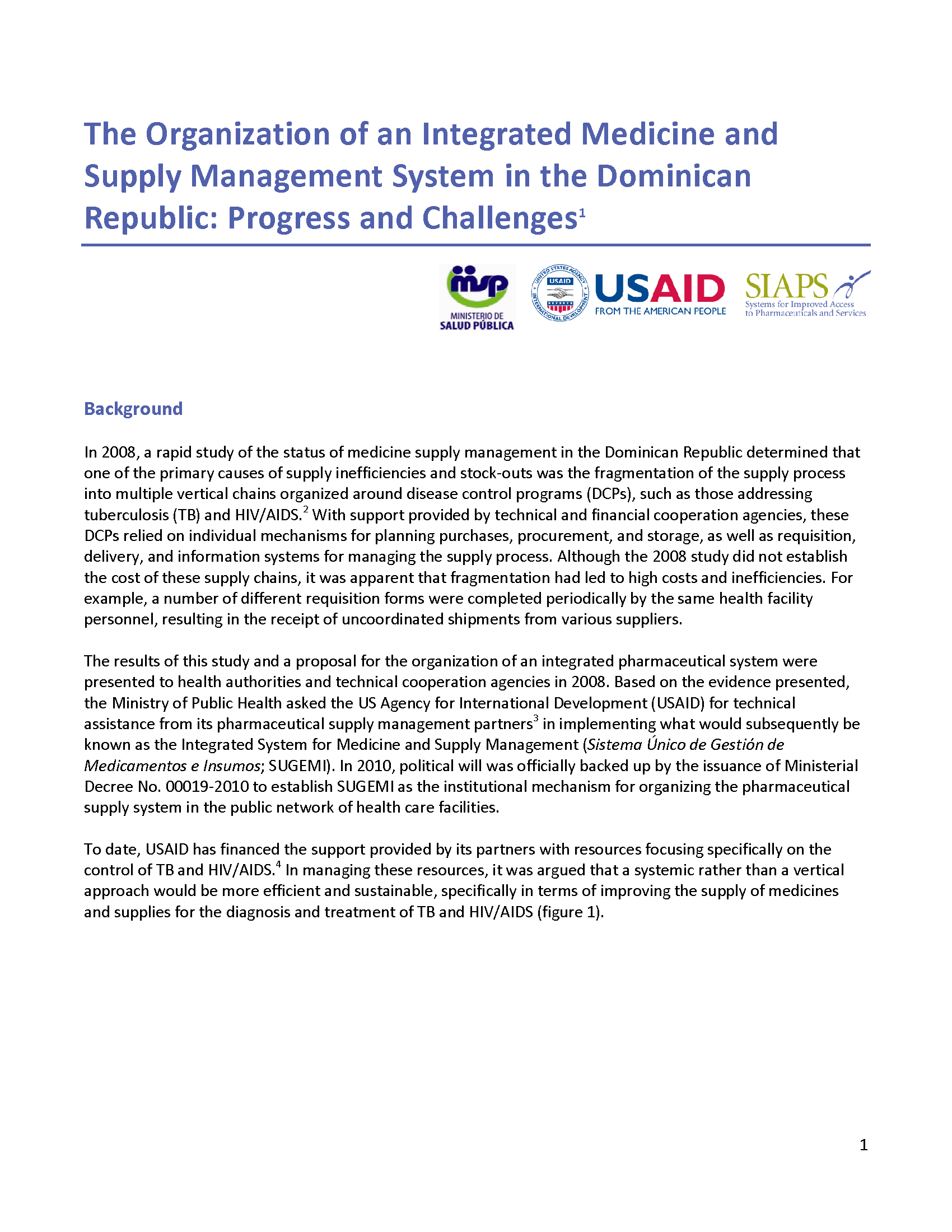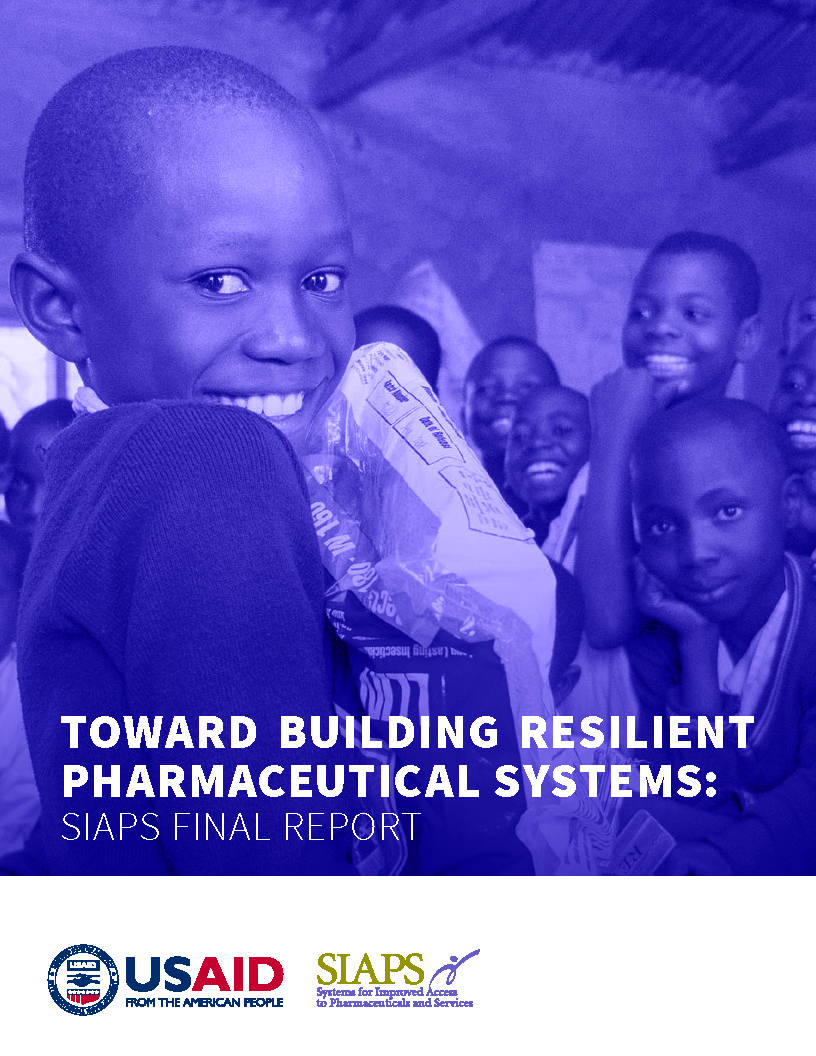
In 2008, a rapid study of the status of medicine supply management in the Dominican Republic determined that one of the primary causes of supply inefficiencies and stock-outs was the fragmentation of the supply process into multiple vertical chains organized around disease control programs (DCPs), such as those addressing tuberculosis (TB) and HIV/AIDS. With support provided by technical and financial cooperation agencies, these DCPs relied on individual mechanisms for planning purchases, procurement, and storage, as well as requisition, delivery, and information systems for managing the supply process. Although the 2008 study did not establish the cost of these supply chains, it was apparent that fragmentation had led to high costs and inefficiencies. For example, a number of different requisition forms were completed periodically by the same health facility personnel, resulting in the receipt of uncoordinated shipments from various suppliers.
The results of this study and a proposal for the organization of an integrated pharmaceutical system were presented to health authorities and technical cooperation agencies in 2008. Based on the evidence presented, the Ministry of Public Health asked the US Agency for International Development (USAID) for technical assistance from its pharmaceutical supply management partners in implementing what would subsequently be known as the Integrated System for Medicine and Supply Management (Sistema Único de Gestión de Medicamentos e Insumos; SUGEMI). In 2010, political will was officially backed up by the issuance of Ministerial Decree No. 00019-2010 to establish SUGEMI as the institutional mechanism for organizing the pharmaceutical supply system in the public network of health care facilities.
This report outlines the structure, functions, and challenges presented by the establishment of SUGEMI.


